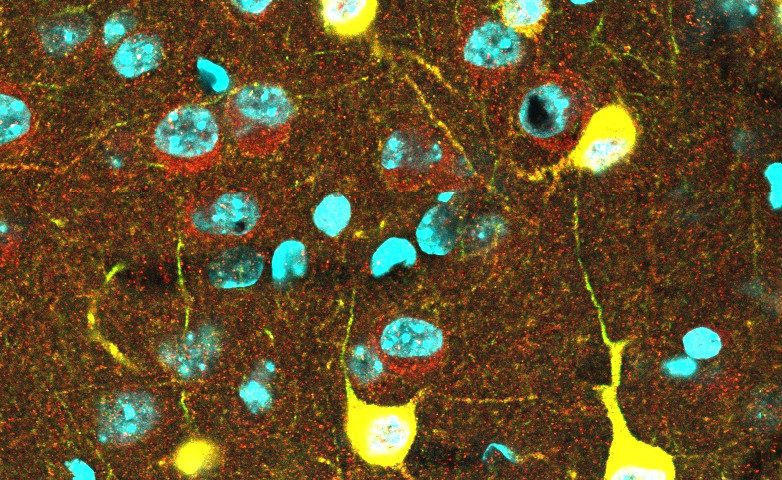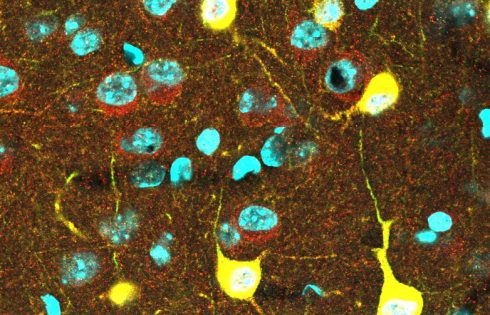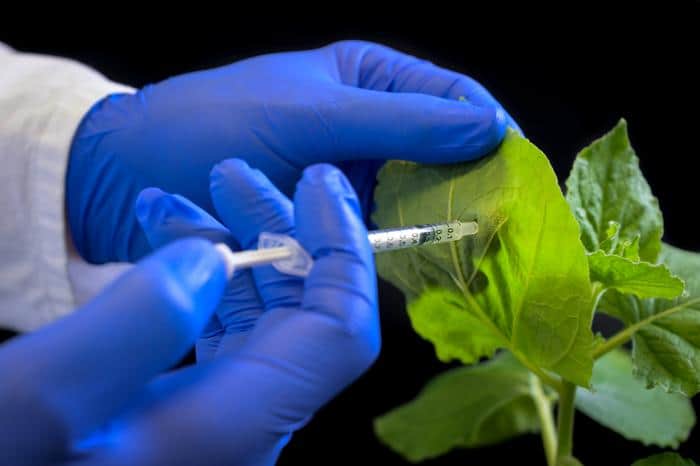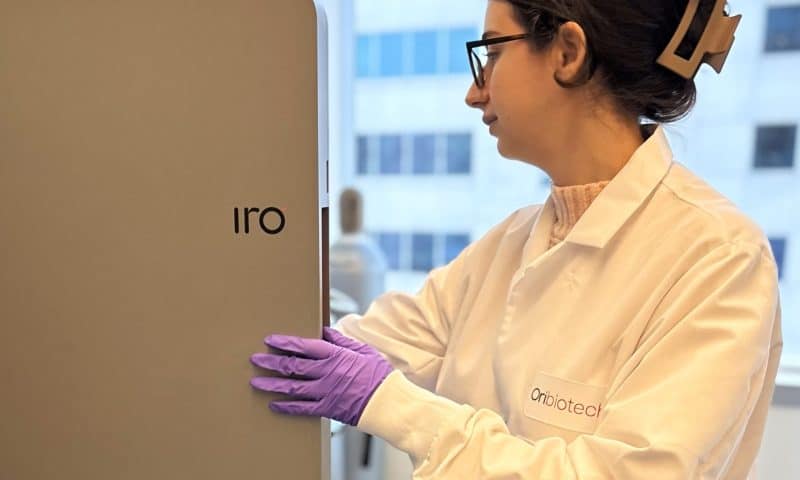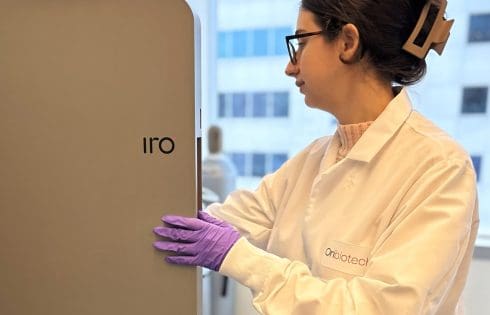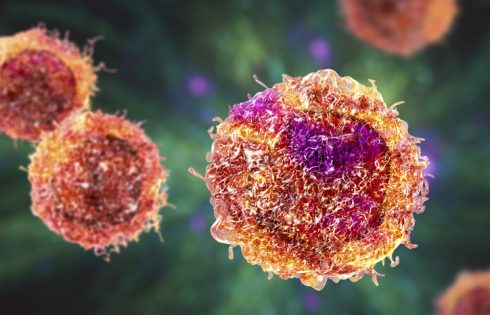
An international team of scientists has—for the first time, they suggest—systematically analyzed somatic mutations in stomach lining tissue to unpick mutational processes, some of which can lead to cancer. The results from their newly reported study in addition uncovered hints of a potential new cause of stomach cancer that needs further research.
The researchers, including scientists at the Wellcome Sanger Institute, Broad Institute of MIT and Harvard, the University of Hong Kong, and collaborators, sequenced the whole genomes of normal stomach lining samples from people with and without gastric cancer. They discovered that cells with “driver” mutations in cancer genes occupy almost 10% of the gastric lining by age 60 years, and in addition reported the unusual finding that gastric cells in some, but not all, individuals carried three copies of certain chromosomes, hinting toward exposure to an unknown mutagen.
Tim Coorens, PhD, previously at the Wellcome Sanger Institute and now at the Broad Institute of MIT and Harvard, said, “By studying somatic mutations in normal tissues, which we acquire over our lifetimes, we can explore the earliest stages of cancer development. We found that despite constant exposure to acidic stomach contents, the stomach lining is protected. However, in those with gastric cancer, we see higher numbers of mutations in normal cells, resembling the earliest stages of stomach cancer.” The study, Coorens noted, “… adds to a mutation map of the gastrointestinal tract, including the esophagus, stomach, small intestine, and colon, to compare mutation rates and mutational processes across the body.”
The work will support researchers as they explore fundamental mutational processes and compare mutation rates across the body, with a view to further understanding the earliest stages of cancer development. Coorens is first author of the team’s published paper in Nature, titled, “The somatic mutation landscape of normal gastric epithelium,” in which the team concluded: “Our findings provide insights into intrinsic and extrinsic influences on somatic evolution in the gastric epithelium in healthy, precancerous and malignant states.”
Gastric—or stomach—cancer is the fifth most common cancer worldwide, with nearly one million new cases in 2022, the authors reported. It is the third leading cause of cancer-related deaths globally, with the highest number of cases in East Asia and South America.
“The epidemiology of gastric cancer indicates that many extrinsic factors, through exposures and chronic inflammation, influence somatic mutagenesis in the stomach,” they further stated. Factors that increase the risk of developing stomach cancer include being overweight, smoking, and infection with the bacterium, Helicobacter pylori, which can trigger inflammation and stomach ulcers. H. pylori infection causes around 40% of stomach cancers in the U.K.
The stomach acts as a reservoir at the first stage of processing food for digestion, and its contents are acidic. The layer of cells that line the stomach—the gastric epithelium—form gastric glands, or pits, and these contain the cells that can give rise to stomach cancer.
The cells in our body acquire genetic changes, known as somatic mutations, throughout our lifetime. “Over the course of a lifetime, cells in the human body acquire somatic mutations, thus generating genetic diversity and enabling natural selection in tissues,” the team noted. With new DNA sequencing technologies, researchers can now analyze these mutations in normal tissues and trace them back over time, providing insights into aging and the earliest stages of cancer development. “These mutation landscapes provide insights into somatic evolution in normal tissues during an individual’s lifetime and into the earliest stages of cancer development.”
The somatic mutation landscapes of normal epithelial cells lining the esophagus, small intestine, and large intestine have recently been characterized, the authors commented. For their newly reported study, Coorens and colleagues set out to investigate somatic mutations within the gastric epithelium to explore the transition between normal, age-related mutations, and those that go on to form stomach cancer.
The team carried out whole genome sequencing of 238 samples of normal, non-cancerous gastric gland tissue from the stomachs of 30 people from Hong Kong, the United States, and the U.K., of whom 18 had gastric cancer and 12 did not. With laser capture microdissection, they used a laser to precisely dissect individual cells, or glands, from the stomach lining samples for genome sequencing.
The researchers found that despite regular exposure to the acidic contents of the stomach, mutations in normal gastric glands were generated at a similar rate to most cells of the body. This suggests the cells in the gastric epithelium are protected against any toxic effects of the acidic stomach contents.
However, in people with gastric cancer, some of the glands from the normal, non-cancerous stomach lining showed changes under the microscope that resembled the early stages of transitioning to cancer. These normal glands had increased numbers of mutations, which may have contributed to initiating gastric cancer. In the cancerous tissue, the number of mutations was much higher, showing that gastric cancers massively accelerate mutations later during their development.
An unusual finding was that some of the stomach lining cells carried three copies (trisomy) of chromosomes 13, 18, and 20. This has not been seen in other tissues in previous studies, suggesting it is unique to the stomach. Trisomies were found multiple times in some of the individuals, but not present in others. “Remarkably, trisomies were concentrated in a subset of individuals and had often arisen independently and several times in the same individual,” the investigators wrote. This implies these individuals may have been exposed to an unknown, external mutagen. “Our data indicate that rather than a continuous age-associated increase of whole-chromosome duplications, these trisomies were generated at a specific time during the lifespan of each individual and possibly confined to specific regions of the stomach,” the scientists further pointed out.
Co-lead author Suet Yi Leung, MD, at the University of Hong Kong, said: “We discovered an unusual phenomenon, where some individuals had three copies of certain chromosomes—known as trisomy—whereas others did not. We’ve not seen this in any other tissue, and it hints toward an unknown, external mutagen that only some of these people may have been exposed to.”
The scientists also found that by the age of 60 years, “driver” mutations in cancer genes, many of which are known to be mutated in gastric cancer, occupy nearly 10% of the stomach lining. This proportion increases when patients experience severe chronic inflammation, a known risk factor for gastric cancer. “Chronic inflammation can lead to metaplasia, a remodeling of the gastric epithelium to resemble intestinal epithelium, which is thought of as a precursor to overt cancer,” the investigators noted.
As people age, increasing numbers of cells in many of their tissues acquire such driver mutations—genetic changes that directly contribute to the development of cancer. While most cells remain normal, this can lead to abnormal cell growth and division, and can result in cancerous tumors. “The prevalence of mutant clones increases with age to occupy roughly 8% of the gastric epithelial lining by age 60 years and is significantly increased by the presence of severe chronic inflammation,” the authors stated.
This finding points to the need for further research into the mechanism by which chronic inflammation increases the risk of gastric cancer. “Severe chronic inflammation was significantly associated with elevated numbers of driver mutations in gastric glands and overall proportions of mutant epithelium in this study, highlighting a role for chronic inflammation in molding the preneoplastic selection landscape, as also identified in inflammatory bowel,” the team further stated in their paper.
Co-lead author professor Sir Mike Stratton, FMedSci FRS, at the Wellcome Sanger Institute, commented, “Ten years ago, we knew very little about the fundamental processes of mutations that are occurring in our bodies. Now with advanced genome sequencing technologies, we can investigate somatic mutations in all cell types, across various normal tissues. This enables us to look back at the evolution of our cells over a lifetime, to understand the key mutational processes that can lead to cancer. At the Sanger Institute, we are leading the way in investigating the causes and consequences of somatic mutations, and exploring the possibility that somatic mutations may also contribute to diseases other than cancer.”
In an associated News & Views, Callum Oddy and Marnix Jansen, at UCL Cancer Institute, University College London, commented that the study reported by Coorens et al. offers a “… comprehensive analysis that reshapes understanding of how mutations accumulate in normal gastrointestinal tissues and how these changes could set the stage for cancer.” The findings, Oddy and Jansen suggest, “… underscore the value of considering the genetic and epigenetic landscape of normal tissues, not just malignant ones, when studying carcinogenesis.”





